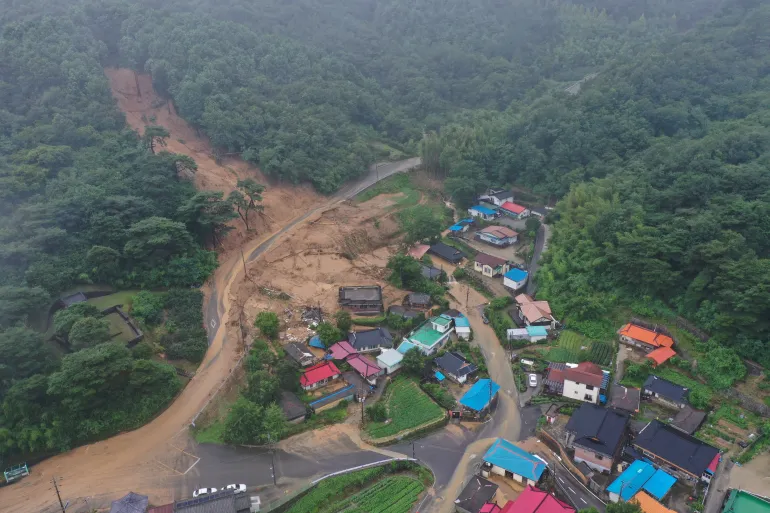Seoul, July 21: Torrential rains that swept across South Korea since July 16 have killed at least 18 people and left nine others missing, even as floodwaters began to recede and government weather advisories for heavy rainfall were lifted on Monday. The national meteorological agency has now warned of a return of heatwaves across the southern parts of the country.
The Ministry of the Interior and Safety confirmed the latest death toll on Monday, with the worst-hit being the southern county of Sancheong, where at least 10 people died and four remain unaccounted for.
The relentless five-day deluge triggered widespread destruction—collapsing homes, unleashing landslides, and sweeping away vehicles and campers in low-lying areas. One person died when their home collapsed in Gapyeong, northeast of Seoul, while a man camping near a stream in the same town was found dead after being carried away by sudden flash floods. His wife and teenage son remain missing.
Two others are still missing in Gapyeong, including a man in his 70s who was buried under debris following a landslide, according to local media reports.
More than 14,000 residents across 15 cities and provinces were forced to evacuate, with extensive damage reported to homes, businesses, roads, and farmlands. The Yonhap news agency said the evacuees are being sheltered in temporary accommodations while local governments continue assessments of the destruction.
In response to the devastation, the South Korean military has deployed about 2,500 troops to support recovery operations in rain-hit regions including the southwestern city of Gwangju and South Chungcheong and South Gyeongsang provinces.
The troops will help overhaul damaged homes, clean up streets, and assist local authorities in restoring essential services, the defense ministry said.
The Korea Meteorological Administration noted that several central and southern regions recorded some of the highest hourly rainfall levels on record, marking this event as one of the most intense summer rainstorms in recent memory.
While rainfall has now subsided, authorities remain on high alert for secondary disasters such as additional landslides and structural collapses. Meanwhile, meteorologists warned that scorching temperatures are expected to return later this week, particularly in the southern parts of the country.
Government officials said rescue and recovery operations would continue in the coming days and pledged support for affected families.
“This is a time for national unity,” said an official from the Ministry of the Interior. “We will continue working around the clock to ensure the safety and recovery of all affected residents.”

